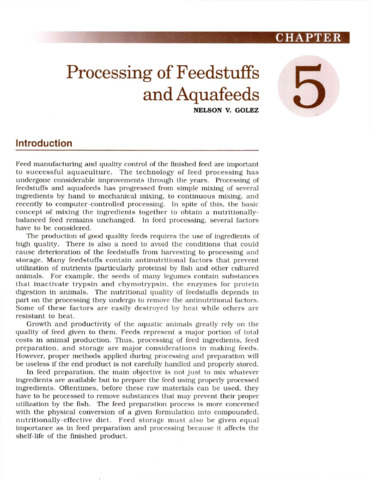Diet development and evaluation for juvenile abalone, Haliotis asinina: animal and plant protein sources
| dc.contributor.author | Bautista-Teruel, Myrna N. | |
| dc.contributor.author | Fermin, Armando C. | |
| dc.contributor.author | Koshio, Shunsuke S. | |
| dc.date.accessioned | 2014-03-25T07:59:04Z | |
| dc.date.available | 2014-03-25T07:59:04Z | |
| dc.date.issued | 2003 | |
| dc.identifier.citation | Bautista-Teruel, M. N., Fermin, A. C., & Koshio, S. S. (2003). Diet development and evaluation for juvenile abalone, Haliotis asinina: animal and plant protein sources. Aquaculture, 219(1-4), 645-653. | en |
| dc.identifier.issn | 0044-8486 | |
| dc.identifier.uri | http://hdl.handle.net/10862/1953 | |
| dc.description.abstract | Growth studies were conducted to determine the suitability of animal and plant protein sources in the diet of abalone, Haliotis asinina. Juvenile abalone with mean initial weight and shell length of 0.69±0.04 g and 11.4±0.35 mm, respectively, were fed practical diets for 84 days at a temperature range of 28–31 °C. The practical diets contained 27% crude protein from various sources such as fish meal (FM), shrimp meal (SM), defatted soybean meal (DSM), and Spirulina sp. (SP). A formulated diet (diet 1) served as the control. The diets were fed to abalone at 2–5% body weight once daily at 1600 h. Weight gain (WG), increase in shell length (SL), specific growth rate (SGR), protein efficiency ratio (PER) and feed conversion ratio (FCR) were evaluated. Highest weight gain (WG: 454%) was attained with abalone fed diet 2 with protein sources coming from a combination of FM, SM, and DSM. This value was, however, not significantly different (P<0.05) from those fed diets 4 and 1 (Control diet) with protein sources coming from FM, SM, SP and FM, DSM, SM, respectively. Abalone fed diet 3, which used both plant protein sources, DSM and SP, showed significantly lower WG (327%). Survival was generally high ranging from 85% to 100% for all treatments. The SGR showed the same trend as the percent weight gain. The FCR and PER obtained, however, were not significantly different for all treatments. The amino acid profile of diets 1, 2, and 4 simulated that of the abalone protein, which could have been a contributing factor to the higher growth rate of abalone fed these diets. Diet 3, which contained only plant protein sources, showed relatively lower methionine values compared with the abalone muscle tissue. Although abalone are considered herbivorous animals, results of this study indicate that a combination of dietary plant and animal protein sources was necessary to attain the best growth rate. | en |
| dc.description.sponsorship | The authors would like to thank Ms. Mae F. Mallare and Mr. Narciso Entusiasmo for their assistance in the conduct of the study, Ms. Florence Jarder for the proximate analyses and Dr. O.M. Millamena for the review of the manuscript. | en |
| dc.language.iso | en | en |
| dc.publisher | Elsevier | en |
| dc.subject | Haliotis asinina | en |
| dc.subject | abalones | en |
| dc.subject | Defatted soybean meal | en |
| dc.title | Diet development and evaluation for juvenile abalone, Haliotis asinina: animal and plant protein sources | en |
| dc.type | Article | en |
| dc.identifier.doi | 10.1016/S0044-8486(02)00410-6 | |
| dc.citation.volume | 219 | |
| dc.citation.issue | 1-4 | |
| dc.citation.spage | 645 | |
| dc.citation.epage | 653 | |
| dc.citation.journalTitle | Aquaculture | en |
| seafdecaqd.library.callnumber | VF SJ 0738 | |
| seafdecaqd.databank.controlnumber | 2003-07 | |
| dc.subject.asfa | amino acids | en |
| dc.subject.asfa | animal nutrition | en |
| dc.subject.asfa | diet | en |
| dc.subject.asfa | feed composition | en |
| dc.subject.asfa | feeding experiments | en |
| dc.subject.asfa | feed conversion efficiency | en |
| dc.subject.asfa | growth rate | en |
| dc.subject.asfa | methionine | en |
| dc.subject.asfa | mollusc culture | en |
| dc.subject.asfa | proteins | en |
| dc.subject.scientificName | Spirulina | en |
Files in this item
| Files | ขนาด | รูป | View |
|---|---|---|---|
|
There are no files associated with this item. |
|||
รายการนี้ปรากฏใน (s)
-
Journal Articles [1229]
These papers were contributed by Department staff to various national and international journals.



